Key takeaways:
- Gamification enhances student engagement and retention by incorporating game-like elements, which can make learning more dynamic and rewarding.
- Implementing gamification can foster collaboration and community among learners, transforming challenges into team-building experiences.
- Challenges include initial resistance from educators, potential misalignment with educational objectives, and varying levels of student engagement due to competitive elements.
- Creating a supportive environment is crucial, as some students may feel pressured or overshadowed by competition while using gamification techniques.
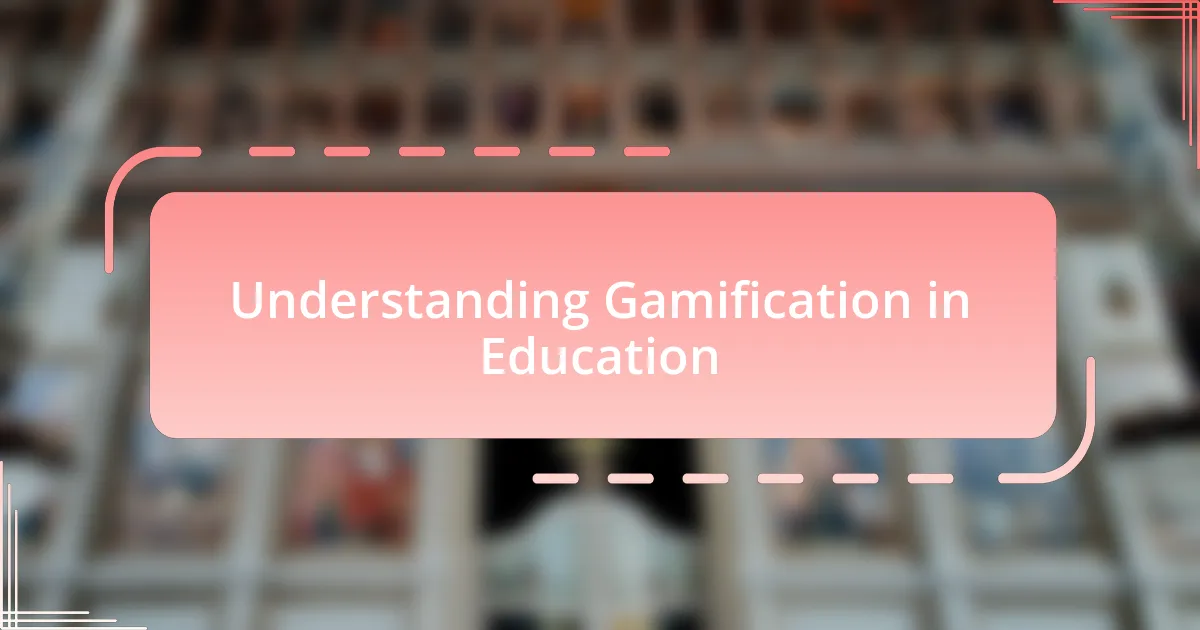
Understanding Gamification in Education
Gamification in education involves incorporating game-like elements into the learning experience, such as points, badges, and challenges. I remember the first time I encountered this concept while facilitating a workshop. Seeing students engage more passionately when they were competing to earn points was a revelation—I realized how much motivation could stem from a friendly challenge.
Isn’t it fascinating how adding just a few elements of game mechanics can transform a mundane lesson into an exciting adventure? When I applied gamification in my own teaching, I noticed that students were not only more eager to participate but also retained information better. It’s almost as if the thrill of earning rewards ignited a deeper connection to the material.
Moreover, gamification encourages immediate feedback, allowing for a more dynamic learning process. I once had a student who struggled with regular assessments but thrived in a gamified environment. He blossomed when he could see his progress on a leaderboard, which motivated him to push his boundaries. This clearly illustrates the potential of gamification to personalize and enhance the educational journey.
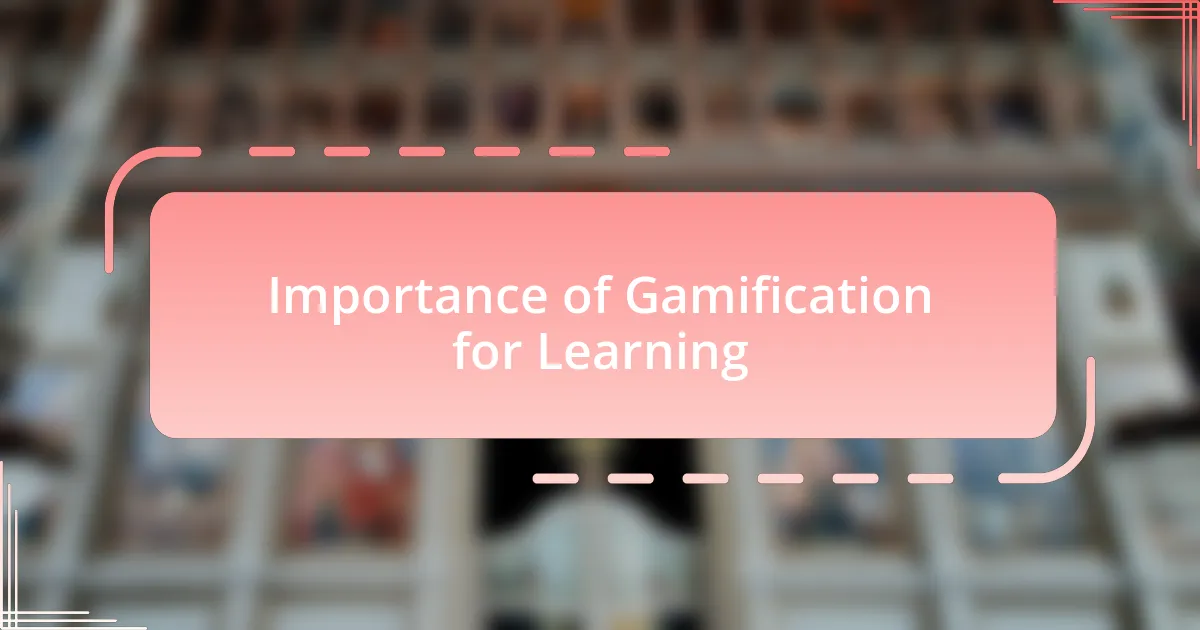
Importance of Gamification for Learning
Gamification plays a crucial role in fostering a sense of community among learners. I remember a project where I divided students into teams, and they spent hours collaborating to solve challenges. The energy in the room was palpable; they were not just learning the subject matter but also building relationships. This collaborative spirit creates a supportive environment where students feel empowered to share ideas and collectively navigate their educational journeys.
The competitive aspect of gamification fuels intrinsic motivation, often leading to higher engagement levels. I once introduced a badge system for completing reading assignments, and it was incredible to see students striving for those badges with such enthusiasm. Their eagerness to earn recognition transformed how they viewed their assignments—it wasn’t just about completing tasks; it became a source of pride and a way to showcase their efforts.
Additionally, incorporating gamified elements can enhance critical thinking skills. I facilitated a scenario-based game that challenged students to make ethical decisions in a religious context. Watching them navigate moral dilemmas and debate various perspectives was invigorating. This interactive approach doesn’t just teach concepts; it fosters deeper comprehension by encouraging learners to apply their knowledge in engaging and thought-provoking ways.
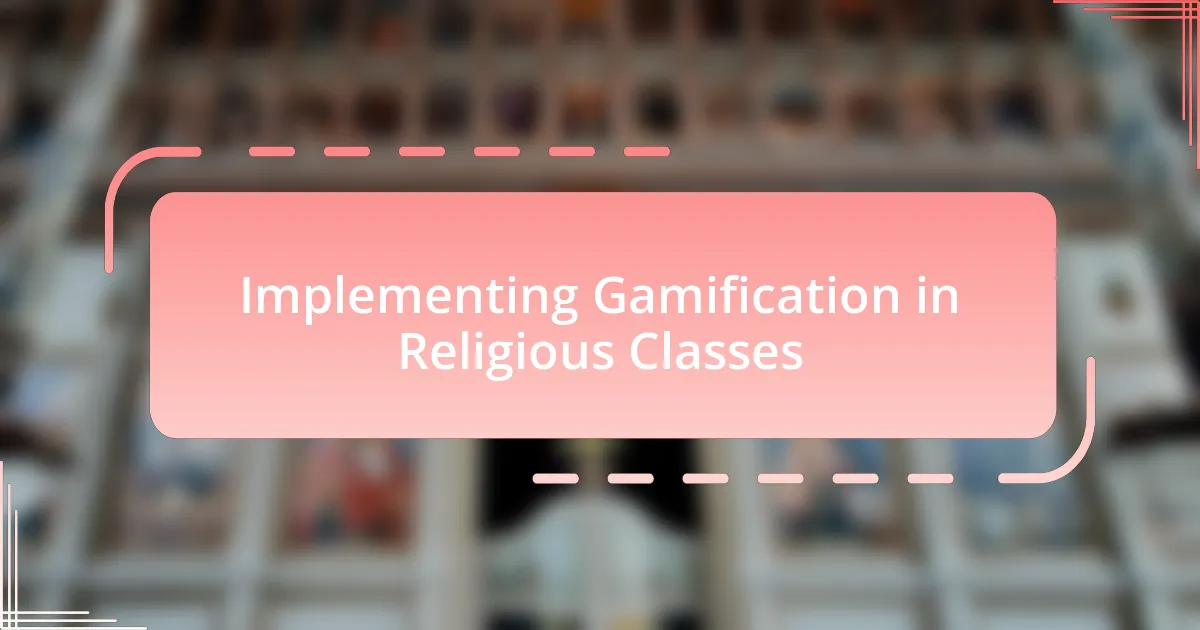
Implementing Gamification in Religious Classes
Implementing gamification in religious classes can transform the way students interact with profound concepts. I recall a time when I turned a lesson on different faiths into an interactive quest. Students had to unlock the teachings of various religions by answering questions, and the sense of accomplishment they felt when achieving each milestone was contagious. It made me wonder—why should learning about diverse beliefs be any less engaging than playing a video game?
Another powerful method is using role-playing scenarios to immerse students in religious narratives. I devised a situation where students had to embody figures from different scriptures, navigating their challenges and dilemmas. The depth of discussion that emerged was remarkable. It wasn’t just about memorizing stories; they truly felt the emotional weight of their characters’ experiences. Isn’t it fascinating how stepping into someone else’s shoes can deepen our understanding of faith?
Incorporating leaderboards can also add a layer of excitement to religious education. I remember creating a point system for participation in discussions surrounding ethical issues. The friendly rivalry it sparked encouraged more students to voice their thoughts. Seeing peers actively engage and support one another in this context reminded me that learning can be both serious and fun. How do we make space for motivation without losing the essence of the subject? Gamification allows us to strike that balance beautifully.
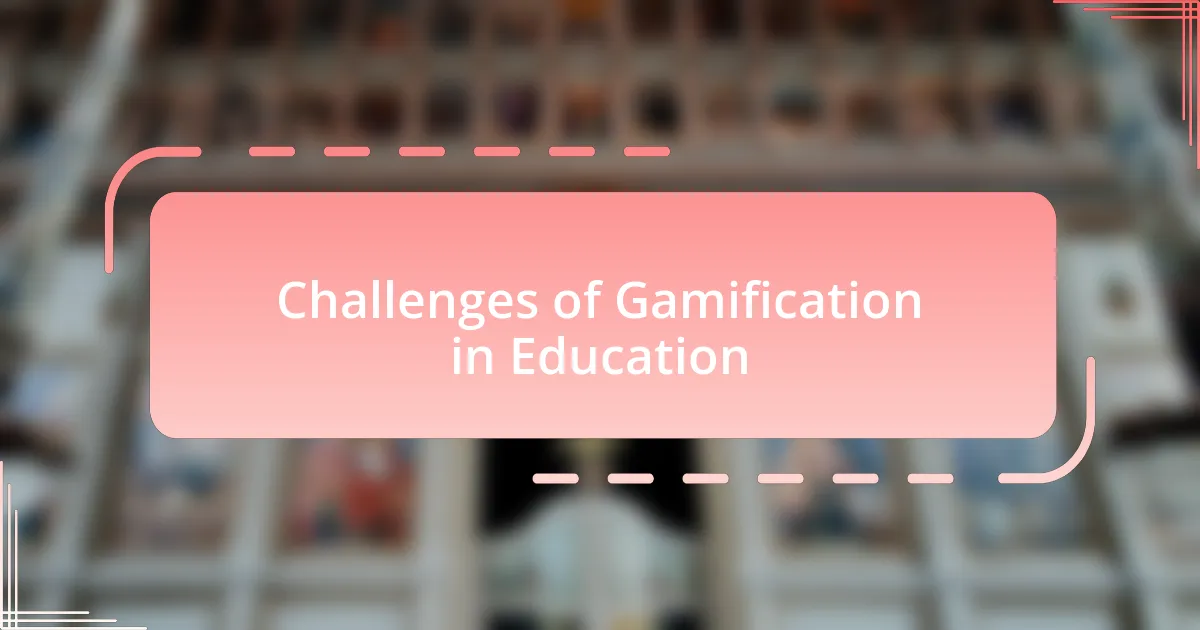
Challenges of Gamification in Education
When considering the challenges of gamification in education, one key issue I’ve encountered is the initial resistance from both teachers and students. For instance, I remember a workshop where educators expressed their doubts about integrating game elements into lessons. They worried that it might trivialize serious topics, such as morality and ethics, critical within religious education. I’ve seen firsthand how some educators approach these concepts with caution, fearing that fun could undermine the gravity of the lessons being taught.
Another significant hurdle is ensuring that gamification aligns with learning objectives. I once facilitated a project incorporating game mechanics, but it soon became evident that many activities strayed from our educational goals. Students were engaged and excited, yet they missed the core teachings we aimed to impart. This experience taught me that while gamification can enhance excitement, it requires careful planning so that the essence of what we’re trying to teach remains intact. How do we keep the balance between enjoyment and educational integrity?
Moreover, there can be a disparity in student engagement levels. While gamification energizes some learners, I’ve noticed that others may feel pressured by competitive elements, leading to anxiety rather than motivation. I recall a student who excelled in traditional assessments but struggled with the game-based approach, feeling overwhelmed by the leaderboard dynamics. This contrast reminds me that we must be mindful of different learning styles, ensuring our gamified approaches are inclusive and supportive for all students, not just the most vocal or competitive ones. How can we create an environment where every student feels valued and engaged?
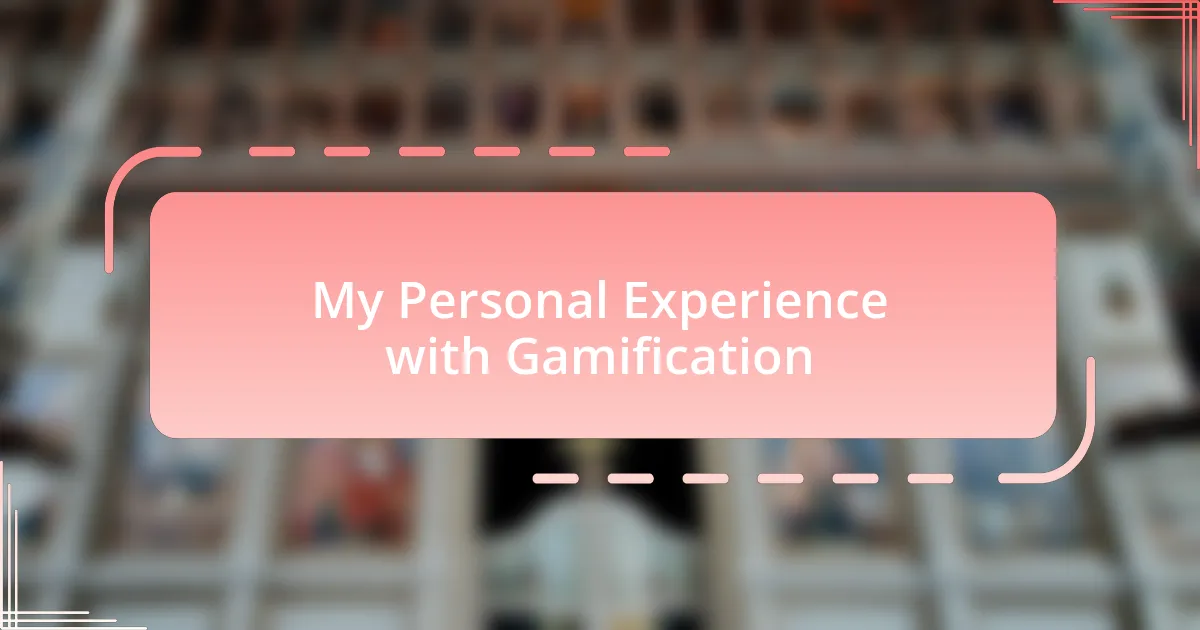
My Personal Experience with Gamification
Having personally engaged with gamification in educational settings, I’ve seen both its benefits and pitfalls. During a community service project aimed at teaching values found in various religious texts, I introduced a point system to encourage participation. While some students thrived, passionately competing for the top place, I also noticed others withdrawing, feeling overshadowed by the excitement. Was the joy of learning overshadowed for them?
In another instance, I created a role-playing game centered on moral dilemmas found in religious teachings. This approach sparked rich discussions and allowed students to explore complex issues in a relatable context. However, I observed that a few students hesitated to share their opinions, worried about being judged in a game-like setting. It made me realize that although gamification can ignite engagement, we must cultivate a safe space where all voices can be heard. How do we achieve that delicate balance?
Furthermore, I remember a time when I implemented a quiz-based game that assessed knowledge of religious history. The competitive format initially thrilled my students, but I soon noticed that some began to associate learning solely with winning. This shift made me question: Can we gamify without compromising the intrinsic value of education? Finding ways to integrate fun while maintaining a deep connection to the subject matter is an ongoing challenge I continue to navigate in my efforts to inspire genuine interest and understanding.